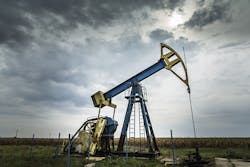Oil and gas wells can harm drinking water, research shows
Some oil and natural gas wells in the United States are having a detrimental effect on local sources of drinking water, according to a Stanford University study.
Rob Jackson, a professor of Earth system science at Stanford, said that living near an oil or natural gas well does not usually affect drinking water, but there are exceptions.
“We have found a number of homes near active wells with very high levels of natural gas in the tap water,” said Jackson, a senior fellow at the Stanford Woods Institute for the Environment and at the Precourt Institute for Energy. “Where the chemistry suggests contamination, the problem usually lies with the integrity of the well, either the cementing used to isolate it from the surrounding rock and water or the steel casing that allows gas and oil to flow upwards.”
For example, in a widely publicized case in Parker County, Texas, the operator cemented very near the surface and deep underground, but there was no cement for 4,000 feet in between. “The gap allowed gases to move up and down freely like a chimney and contaminate the drinking-water supply,” Jackson said.
In addition to structural issues, Jackson and his colleagues identified problems associated with shallow hydraulic fracturing wells. Contamination is more likely to occur when there is not enough separation between the fracking activity and drinking water sources.
“We found a surprising number of places where companies are fracking directly into shallow freshwater aquifers,” he said. “In no other industry would you be allowed to inject chemicals into a source of drinking quality water. Should it be allowed? In my opinion, no.”
In Europe, environmental concerns have led several governments to take a much more cautious approach to hydraulic fracturing, Jackson pointed out.
“In Germany, France and many other countries, officials are under pressure to invest in solar, wind and other renewables instead of a technology that produces greenhouse gases,” he said.
